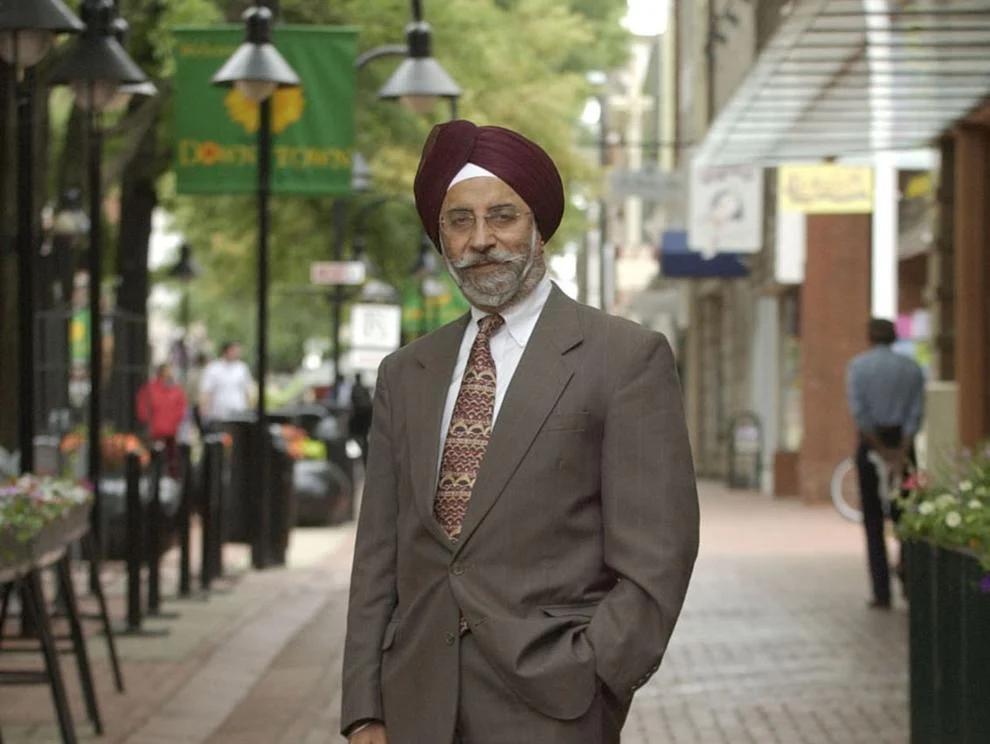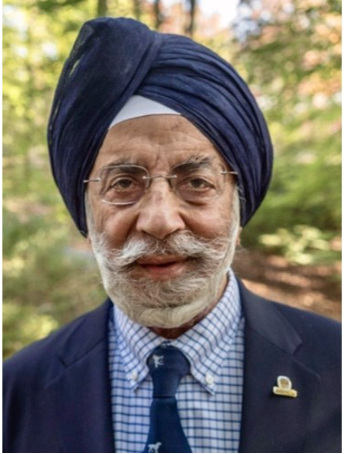
Late Charlottesville mayor, planner, and educator Satyendra Huja (1942-2025) remembered
Longtime Charlottesville planning chief Satyendra Huja, who pushed the city to create a riverfront greenway and helped convert a stretch of Main Street into a popular tree-canopied pedestrian thoroughfare, died February 14 at the age of 83.
Although he later served a pair of four-year terms as a city councilor, including a four-year stint as mayor, for many, it was Huja's more than three decades as a Charlottesville planner — particularly opening the Downtown Mall in 1976 — that remain most indelible.
"He just had a long-term vision, and I think our city is that much better for all that he gave to it," former City Councilor Kay Slaughter told The Daily Progress.

When his peers on [the City] Council appointed him mayor in 2012, the Indian-born Huja became the first Indian Sikh mayor of an American city.
Although he would eventually do mayorly things, such as greeting heads of state U.S. President Barack Obama and French President François Hollande when they visited the city together in 2014, on the City Council dais, Huja pushed an urbanism platform calling for continuous sidewalks, more bike lanes, 15-minute bus headways and the planting of 1,000 trees each year.
"Better land use is what the people of Charlottesville wanted when they voted for Huja’s platform," City Councilor Natalie Oschrin told The Daily Progress. "We must build on the legacy of Huja’s platform for more sidewalks, trees and bike lanes."
Historian Coy Barefoot recalled taking a walk with Huja to see the planner's first streetscape after shepherding the Mall past the wary business community: West Main Street. Barefoot said that West Main before Huja was a "wasteland" where empty auto dealerships and moribund gas stations betrayed the prior regime's emphasis on treating urban neighborhoods merely as passageways for suburban commuters.
In addition to creating new parking and widening sidewalks for a new centerpiece of the historically Black Starr Hill neighborhood, Huja found federal money in 1981 for planting trees and commissioning murals.
While people in Charlottesville's Belmont, Starr Hill, Corner and Court Square neighborhoods can now walk on streetscapes planned by Huja, many say that what cemented his legacy was his campaign to convert a central stretch of car-choked Main Street into at least eight blocks of bricks and trees.
While much of the conceptual work for the Downtown Mall preceded his hiring, Charlottesville benefited from Huja's encouragement and stewardship, according to [UVA School of Architecture] landscape architecture professor Elizabeth Meyer, who is writing a book about the Downtown Mall.
"The success of a design project, particularly a public space, requires someone who curates it and cares for it and advocates for it," Meyer told The Daily Progress.
In 2023, the year the Mall was named to the to the Virginia Landmarks Register, the state Department of Historic Resources noted that of the 200 American streets converted for pedestrian space from the 1960s to the 1980s, only about 30 remain.
"The fact that Satyendra was a city planner," Meyer said, "has a lot to do with why the Mall endured."
This article was first published by The Daily Progress and authored by Hawes Spencer. An excerpted version is shared above, and full version can be read at the link below.
Author Contact: hspencer@dailyprogress.com
|
Image

|
More on Satyendra Huja
Born in Kohat, India in 1942, Satyendra Huja immigrated to the United States in 1960. He received his undergraduate education at Cornell University and Roberts Wesleyan College in Architecture and Psychology respectively. He received his BA in psychology with honors. He earned his graduate degree in City Planning from Michigan State University. Huja was elected Mayor of the City of Charlottesville and served two terms from 2012-16. He was a member of Charlottesville City Council for 8 years. Prior to that, he worked for the City of Charlottesville for 33 years as the Director of Planning, Director of Community Development and finally as Director of Strategic Planning. He was responsible for the first adopted comprehensive plan for the City of Charlottesville, which included physical, social, and economic factors in a holistic manner. At the School of Architecture, he was a lecturer for the Urban and Environmental Planning Department for four decades. He will be missed by UVA School of Architecture faculty and staff, and countless former students.
Celebration of Life
Huja is survived by his wife of 20 years, as well as two sons. A celebration of life service will be held at 3 p.m. Saturday, March 1, at the Unitarian Universalist Church in Charlottesville.


